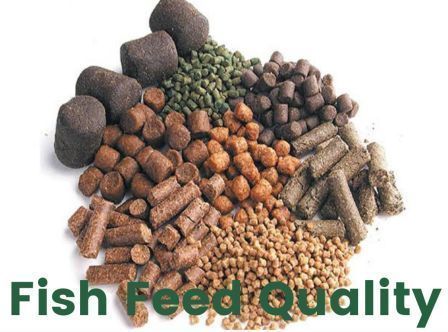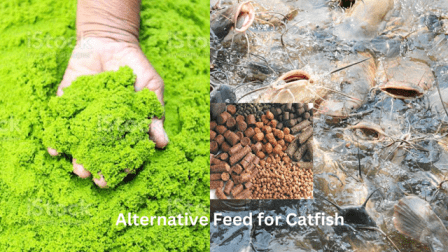Catfish Feeding & Nutrition
Catfish Feed Quality: Bane Of Fish Farming In This Present Day

It is feeding time at Marywil Farms, but something seems off. The catfish are not eating as expected. Instead, they merely pick at the feed floating on the surface of the ponds. This has become an all too common sight on catfish farms nowadays. What could be the reason? Poor quality feeds that lack essential nutrients.
These feeds contain anti-nutritional factors that deter the fish from eating properly. Commercial catfish farming has experienced steady growth in Nigeria over the past decades to meet rising demand. However, producers have been struggling with declining productivity and profits.
One major but often overlooked contributor to this problem is the deteriorating quality of commercially produced catfish feeds. With substandard feed formulation, deficiencies in important nutritional components like amino acids and vitamins are unfortunately common.
The presence of mold, rancid fat, and mycotoxins further reduces feed palatability and safety. Even on farms using high-quality feed, improper storage accelerates spoilage in hot and humid conditions. These issues ultimately translate to reduced feeding, poor growth performance, increased susceptibility to diseases, and higher mortality rates.
The dire state of catfish feed quality has emerged as a huge roadblock to viable and sustainable aquaculture production. Without addressing this crisis, the future of the industry will remain bleak.
There is a need for feed manufacturers and farmers to come up with quality alternative food for catfish to sustain the livelihoods of millions of small-scale farmers in Nigeria.
Negative Impact of Catfish Feed Quality
The alarming feed quality issues plaguing the catfish aquaculture sector have far-reaching negative consequences. Catfish farmers face severe economic losses as substandard feeds affect feed conversion ratio and growth rate. This also results in size variability at harvest, increased susceptibility to diseases, and higher mortality.
Cost of feeding alone accounts for 60-70% of operating costs for fish farmers. Many small-scale farmers struggle to break even and end up losing their investment in the sector.
These trends discourage young entrepreneurs from venturing into catfish farming and curtail the sector's ability to expand and achieve its true potential. The impacts extend beyond struggling farmers and shrinking industry growth.
As consumers are increasingly becoming aware of feed quality issues, it can lead to decreased market demand due to food safety concerns. If nothing is done soon, the dream of developing catfish farming into an engine of employment, export revenue, and food security may become another story.
What is the Solution?
There are few solutions to producing good quality catfish feed in Nigeria to sustain the industry. These include:
- Improving catfish feed quality must be positioned as a top priority. Concerted efforts across multiple fronts are needed to formulate and implement impactful solutions.
- Stakeholders in the industry can come up with strict regulations on the nutritional standards for catfish feed production.
- Local research into suitable alternative protein sources for catfish feed is also imperative to reduce reliance on expensive imports and make high-quality feeds more economically viable.
- Low-interest credit provision through community farming cooperatives can help small-scale catfish farmers go into feed production
Conclusion
Poor-quality fish feed has emerged as a major threat to the sustainability of fish farms and the entire industry at large. Deficient nutrient formulation, the presence of anti-nutritional factors, and improper storage resulting in feed spoilage are creating a crisis that calls for urgent intervention.
These issues translate into reduced growth rates, increased mortality, and economic hardship for small-scale producers. See my guide on how to use black soldier flies to produce quality feed for your fish
Ensuring farmers have reliable access to cost-effective quality feed will safeguard livelihoods, and improve growth.
The time to redeem catfish farming as one of the engines for employment is now.



recent comments